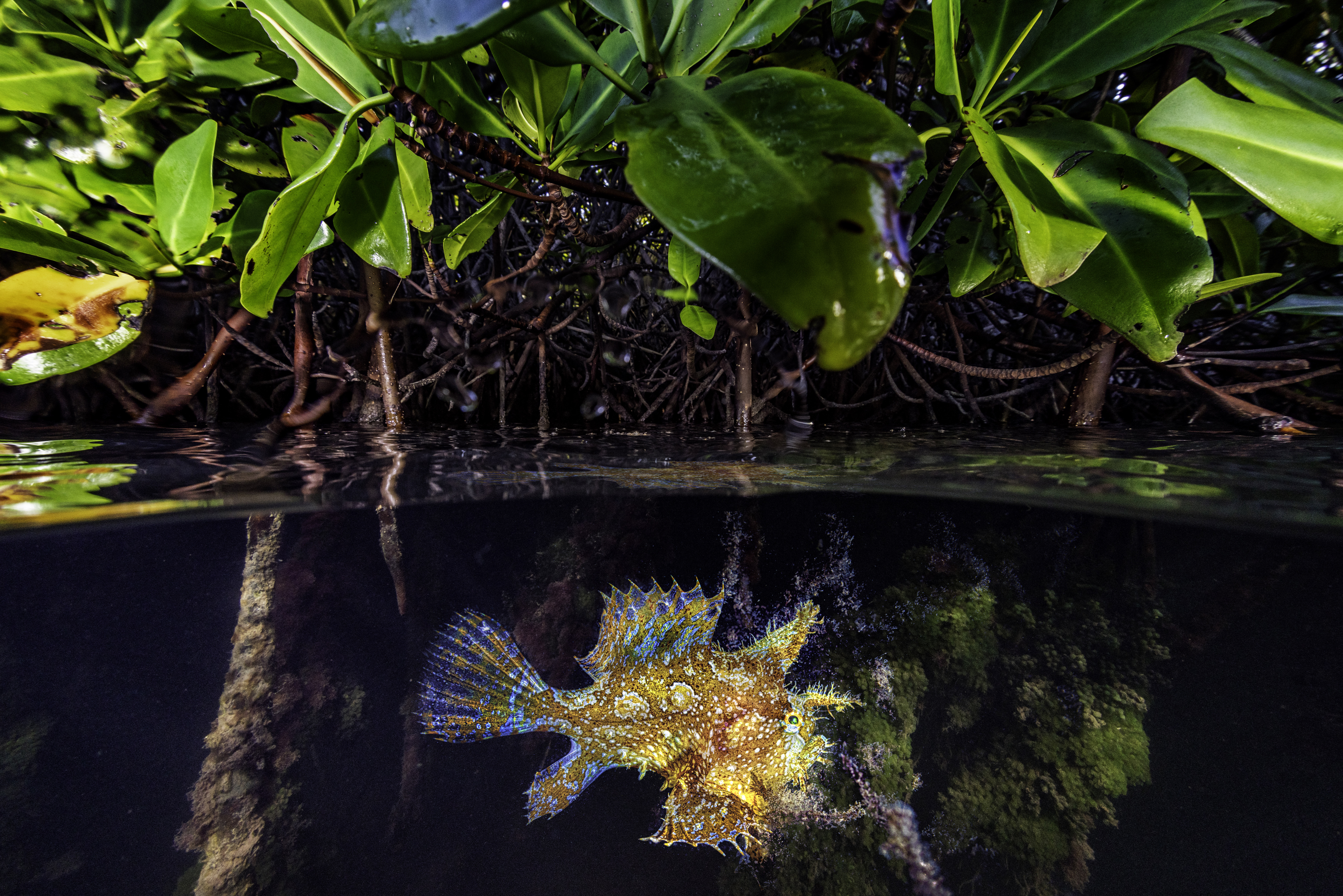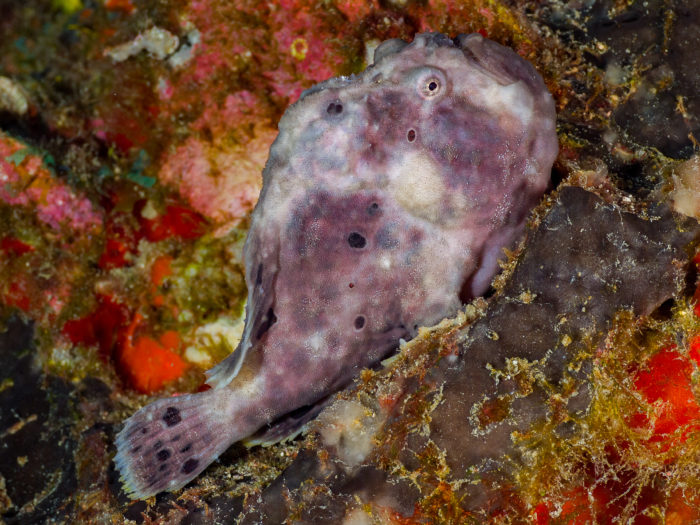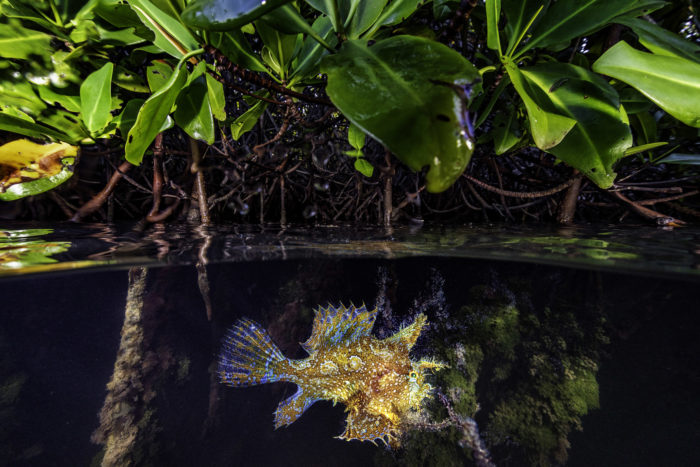
Sea Wonder: Frogfish

A frogfish in Flower Garden Banks National Marine Sanctuary’s Stetson Bank. Photo credit: Steve Miller
Approximately 50 species of frogfish (antennariida) inhabit the world’s ocean, but looking at them, you might assume they live in outer space! They are closely related to anglerfish and quite an underwater marvel. They are masters of camouflage, have feet for walking, and come in so many colors and variations that they can be hard to identify.
Description
Members of the bony fish family, frogfish are some of the most colorful and bizarrely textured fish in all the ocean, displaying colors like black, yellow, orange, pink, and brown, and textures that mimic sponges, reefs, and rocks. Most species have a forward-facing dorsal fin that hangs over its mouth and acts like a lure to attract prey. They don’t have swim bladders and are not good swimmers. This is why they use their leggy fins to walk and hop about the seafloor, though they can swim for very short distances.
Diet & Habitat
Frogfish are strict carnivores that eat fish, crustaceans, and even other frogfish. Their bodies camouflage with their surrounding environment, allowing them to sit very still and use their lure organs to attract unsuspecting prey. They are considered ambush feeders because they sit very still and strike when the moment is right. Since it all happens in a flash, they are indiscriminate feeders and will snatch up anything that passes by, even if it is larger than the frogfish’s mouth. Luckily, the frogfish can expand its mouth up to 12 times its original size to accommodate a meal! Moray eels and other frogfish naturally prey upon these animals.
Frogfish live in nearly all areas of the global ocean, especially in shallower areas between temperate and tropical latitudes. One exception is the Mediterranean Sea – no frogfish live there for some reason. Frogfish prefer quieter, shallower areas like coral reefs and rocky areas. Due to their elusive nature, it is quite a treat to see one while diving. In the National Marine Sanctuary System, we see frogfish in every sanctuary except for the Great Lakes and freshwater sites.
Life History
Frogfish reproduce sexually, though they have varying reproductive strategies, seasons, and outcomes depending on the species and where they live. However, many species lay their eggs encapsulated in complex, floating rafts of mucus called an egg raft. Other species will practice parental care and carry their eggs with them until they hatch. Frogfish aren’t particularly social animals, though individuals often live near one another.
Threats & Conservation
While most populations of frogfish are considered stable, they are particularly vulnerable to habitat decline and are at risk of extinction. This is due to competition from invasive species, over-collecting by aquarists in the aquatic fish trade, climate change, ocean acidification, and habitat degradation.

Photo credit: Lorenzo Mittiga/OceanImageBank
